Crafting effective motion graphics storytelling for brands
Crafting compelling narratives within promotional motion graphics proves essential for brands aiming to connect deeply. Beyond simply capturing initial attention, the real power of these visuals lies in the stories they tell and how well those stories guide viewers.
Brands must ensure their video narratives culminate in clear, Specific calls to action . Instead of vague requests, they should opt for action-oriented text relevant to the viewer's place in their journey, perhaps suggesting " Start Your Free Trial " or "Request a Demo." Measuring the true return on investment requires comparing production costs against tangible value generated, such as increased qualified leads or reduced support inquiries from better-informed prospects.
To make a product tour resonate, integrate features into relatable, real-world scenarios. Showing how a product fits into existing workflows or solves specific industry problems significantly increases its perceived value . Analyzing viewer behavior with tools like heatmaps provides invaluable data, revealing exactly which parts of the story hold attention and where viewers might disengage. This granular insight informs narrative refinement .
- Incorporating social proof, like displaying well-known customer logos or citing user statistics, builds immediate credibility and trust within the narrative.
- Brands should also leverage A/B testing , experimenting with different narrative hooks, calls to action, or even script variations to see what resonates most effectively with their target audience.
- Optimizing content for various platforms means considering viewer intent; a short Animated ad video for social feeds needs instant impact, while a video on a product page can offer more detail.
- Continual analysis and testing refine the storytelling approach, ensuring maximum engagement and conversion.
Understanding promotional video structure for impact
Crafting promotional motion graphics that truly make an impact involves deliberate structural choices. Think of it as designing an experience for the viewer, guiding them logically towards a desired understanding or action. Effective structure ensures your message resonates and achieves its purpose, turning passive viewers into engaged prospects.
Achieving impact starts with a clear objective guiding the video's flow. Calls to action, for instance, must move beyond vague suggestions; they should be actionable directives tailored to the viewer's journey, like "Start Your Free Trial" or "Download the Report." Measuring success means looking at tangible outcomes, assessing how the video impacts qualified lead generation or reduces support queries.
Demonstrating value within relevant contexts makes a product tour relatable. Showing how features integrate into existing workflows or solve specific daily problems increases perceived value. For an animated brand video , structuring the narrative to reflect core values and mission helps build an emotional connection. Analyzing viewer behavior through tools reveals exactly which parts hold attention, providing data for refinement.
Incorporating social proof, like recognizable client logos or user statistics, quickly builds trust. Different platforms require structural adaptation; content for social feeds needs an instant hook and clarity without sound, while a longer, more detailed structure suits a product page. When crafting an animated company overview video , ensuring a logical progression through offerings prevents viewer confusion. Strategic A/B testing on elements like the opening seconds or CTA wording yields insights for optimization.
Ultimately, the structure determines how effectively your promotional motion graphics convert interest into tangible business results.
Exploring distinct graphics animation styles
Moving beyond the inherent visual appeal of motion, maximizing the impact of promotional graphics involves strategic execution and measurement. They are powerful tools, but their true value unfolds when creators meticulously plan viewer interaction and define success metrics.
Specific calls to action stand crucial at a video's conclusion. Replacing general prompts with action-oriented phrases tailored to the viewer's stage – think "Request a Demo" or "Download the Report" – guides prospects effectively towards conversion goals. This clear direction capitalizes on the engagement built by the animation.
Measuring success goes beyond views; it quantifies the return on investment. Compare production costs against generated value such as increased qualified leads, reduced sales cycle lengths, or decreased support volume. For instance, producing an animated corporate video explaining internal procedures can significantly cut down on support queries, directly impacting cost savings.
Presenting solutions within real-world scenarios makes them incredibly relatable. Whether detailing a SaaS product's benefits or a complex service offering, demonstrating value through an animated explainer video using realistic scenarios makes the abstract concrete and relatable for viewers, showing exactly how it integrates into existing workflows. Analyzing viewer behavior with tools like heatmaps reveals crucial insights, pinpointing confusing sections or where interest drops, allowing for precise content refinement. Incorporating social proof, like recognizable client logos or user statistics, quickly builds trust and credibility. A/B testing various elements, from thumbnails to CTA wording, identifies what truly resonates with the target audience and drives higher conversions. Optimizing for different platforms means considering viewer intent and environment; social media requires brevity and visual clarity without sound, while landing pages allow for more detail.
- Employ precise, action-oriented calls to action aligning with the viewer journey.
- Quantify success by tracking costs against valuable outcomes like lead generation or reduced support.
- Utilize real-world scenarios to demonstrate product value and relatability.
- Analyze viewer behavior data to identify content strengths and weaknesses for optimization.
Mastering these strategic layers ensures promotional motion graphics deliver tangible business results beyond mere visual appeal.
Ensuring strong video visual branding consistency
Ensuring video assets resonate requires strategic focus beyond initial creation. Teams should prioritize clarity in calls to action. Instead of generic "Learn More," prompts must be action-oriented, like "Start Your Free Trial" or "Download the Report," tailored to the viewer stage and video objective. This directness guides viewers towards desired outcomes. Understanding the impact means measuring the return on investment. This involves tracking production costs against generated value, including increased qualified leads or reduced sales cycle length. An animated marketing video designed with clear objectives makes measuring these outcomes more straightforward.
Making content relatable is key, especially in product demonstrations. Featuring real-world scenarios and demonstrating features within relevant contexts builds credibility. Showing how a product integrates into existing workflows or solves industry-specific problems significantly increases its perceived value for potential users. An animated infographic video , for instance, can visually break down complex integration steps or data flows, making the value proposition immediately clear. Analyzing viewer behavior offers deep insights into content performance. Tools like heatmaps reveal which video segments hold attention or cause viewers to disengage, providing data to refine content.
- Incorporating social proof, such as recognizable client logos or user statistics, quickly builds trust and credibility.
- A/B testing various video elements, from thumbnail images to the opening seconds or CTA wording, identifies what best connects with the audience.
- Optimizing videos for specific platforms is essential; social media demands instant attention and potentially sound-off viewing, while product pages allow for more detail.
- This iterative process of creation, analysis, and refinement ensures that video efforts consistently support marketing goals.
Ultimately, maintaining visual branding consistency across all promotional motion graphics reinforces identity. Coupled with these strategic approaches, this ensures videos not only capture attention but also effectively move prospects through their journey, driving measurable success.
Applying fundamental motion design principles
Building on foundational visual principles, applying strategic motion design elevates promotional content effectiveness, moving viewers towards desired actions. Directing people clearly after they have watched an animated process video demonstrating a workflow or an animated product video showcasing features is paramount. Calls to action must be compelling, relevant, and placed strategically within the visual narrative. Replacing vague prompts with action-oriented phrases like "Start Your Free Trial" increases conversion potential significantly.
Measuring video impact goes deeper than simple view counts. Successful campaigns track key performance indicators aligned with business goals, assessing how motion graphics contribute to lead generation, shorter sales cycles, or reduced support inquiries. Calculating return on investment involves evaluating production expenses against the quantifiable value generated, ensuring efforts yield measurable results.
Presenting offerings effectively requires showing them in action. Demonstrating features within relatable, real-world scenarios helps viewers envision how solutions fit into their daily tasks. Highlighting seamless integration into existing workflows increases perceived value and relevance for the audience. Analyzing viewer behavior provides invaluable insights for refinement.
- Utilizing heatmaps and attention tracking reveals precisely which video segments resonate most or cause viewers to disengage.
- Incorporating social proof builds immediate credibility, featuring brief mentions of satisfied users or well-known client logos leverages external validation effectively.
- Employing A/B testing for continuous optimization helps identify which visual elements or messaging variations perform best with the target audience.
- Customizing content format and length for specific platforms and viewer environments ensures maximum reach and engagement across diverse channels.
Applying these fundamental motion design principles ensures promotional videos not only capture attention visually but also strategically guide viewers towards meaningful engagement and conversion.
Optimizing motion graphics pacing and rhythm
Optimizing motion graphics pacing and rhythm is paramount for crafting compelling narratives that resonate deeply with viewers. Beyond stunning visuals, how information unfolds determines whether audiences stay engaged, understand the message, and take desired actions. Creators understand effective pacing and rhythm transform a sequence of scenes into a persuasive journey, guiding the viewer's attention and emotional response from start to finish.
Tailoring content specifically for platform and audience expectations is crucial. An animated social media video , for example, must capture attention immediately within a busy feed, demanding a faster initial rhythm compared to content on a dedicated landing page. Analyzing viewer behavior through analytics reveals exactly where interest peaks or drops, providing indispensable data to refine timing and ensure key messages land effectively. This granular insight allows creators to make data-driven decisions about segment length and flow.
Implementing specific actionable strategies within the motion graphic's structure amplifies its impact. This involves more than just placing elements; it means timing their appearance within the rhythm for maximum persuasive power. For direct conversion goals, an animated sales video should build compellingly to a clear, action-oriented call.
- Position clear and specific calls to action strategically, typically near the end or following key benefit demonstrations, using action-oriented language relevant to the viewer's stage.
- Incorporate real-world scenarios and social proof, such as company logos or user statistics, seamlessly into product tours or explanations to build trust and relevance quickly within the narrative flow.
- Measure effectiveness by tracking return on investment, correlating production costs with tangible outcomes like increased qualified leads, shorter sales cycles, or reduced support inquiries resulting directly from viewer understanding.
- Conduct A/B testing on various elements, including initial pacing, the timing or wording of calls to action, or even slight variations in script delivery, to identify precisely what resonates most and drives higher conversion rates.
Ultimately, fine-tuning pacing and rhythm based on strategic placement, audience data, and rigorous testing ensures promotional motion graphics achieve their full potential, driving measurable results and fostering stronger connections.
Developing compelling promotional content narratives
They know attention is fleeting. Converting that initial engagement into meaningful results requires a narrative that guides viewers toward a specific next step. Clear and actionable calls to action are vital at the conclusion of promotional motion graphics. Instead of generic prompts viewers often ignore, they should employ action-oriented text. Phrases like "Start Your Free Trial" or "Request a Demo" prove far more effective, aligning directly with the video's objective and where the viewer sits in their decision-making process.
Compelling narratives also demonstrate genuine value by showcasing solutions in realistic contexts. Using real-world scenarios and illustrating how a product integrates into existing workflows makes the message relatable and believable. Showing features in action, perhaps in an animated tutorial video demonstrating a complex process, makes the product's value clear. For software or mobile solutions, an app explainer video can vividly show how the application fits into users' daily tasks, increasing its perceived value. Incorporating social proof, such as brief mentions of satisfied users or recognizable company logos, swiftly builds credibility and trust.
Understanding how viewers respond is crucial for refinement. Measuring return on a promotional motion graphics investment goes beyond simple views; it tracks tangible value like increased qualified leads or reduced support inquiries. Analyzing viewer behavior through tools like heatmaps reveals exactly which moments resonate or cause drop-off, providing data to refine content. Employing A/B testing on elements like the opening seconds or call to action wording yields significant insights into what truly drives conversions across different platforms, tailoring content for where and how people watch.
- Prioritize specific action-oriented CTAs over vague instructions.
- Show product value through relatable real-world examples and social proof.
- Utilize analytics to understand viewer interaction and optimize content.
- Adapt video elements based on platform and viewing environment.
Developing these compelling narratives transforms promotional motion graphics from mere visuals into powerful tools that connect, convince, and contribute directly to business goals.
Using graphics color psychology effectively
Crafting promotional visuals involves far more than just aesthetic appeal; creators must employ strategic elements driving tangible results. Ending a video with specific calls to action proves vital. Moving beyond generic prompts helps guide viewers effectively. Think "Start Your Free Trial" or "Request a Demo," text directly relevant to the content shown and the viewer's likely interest level. Tailoring that call ensures viewers know exactly what next step awaits them. For those crafting a brand motion graphics video, focusing solely on aesthetics overlooks crucial strategic elements that convert interest into action.
A key measure of success involves understanding the return on investment. Teams measure ROI by comparing production expenditure against value generated. This value surfaces in various forms. Look for increases in qualified leads or a reduction in sales cycle length as prospects arrive better informed. Decreased support ticket volume also signals success from users who gained clarity from the video content. Similarly, an effective explainer animation video benefits immensely from demonstrating clear value proposition tied to measurable outcomes.
- Showcase products within real-world scenarios demonstrating integration into existing workflows, enhancing relatability.
- Analyze viewer behavior using heatmaps and attention-tracking tools to pinpoint confusing segments or interest drops.
- Quickly build trust and credibility by incorporating social proof, perhaps displaying client logos or mentioning user statistics.
- Conduct A/B testing on elements like thumbnails, introductions, or CTA wording to discover what truly resonates and improves conversion rates.
Optimizing content for different platforms presents another crucial step. Videos destined for social media feeds require instant hooks, often needing comprehension even without sound through text overlays, and demand brevity. In contrast, content embedded on a product page assumes higher viewer intent, allowing for greater length and detail. Employing this layered approach ensures maximum impact across diverse viewing environments. Strategic design thinking extends beyond just visual style; it encompasses every element guiding viewer experience and achieving business objectives.
Selecting video distribution platforms strategically
Selecting video distribution platforms strategically requires careful consideration, ensuring content resonates where audiences spend their time. Different platforms demand tailored approaches for optimal viewer engagement and results. Understanding that viewer intent varies significantly across channels is fundamental to success. Content found within social media feeds, for instance, must grab attention instantly and often relies on visual comprehension through text overlays, as viewers may watch without sound. Conversely, videos placed on a dedicated product page can afford to be more detailed, assuming higher viewer interest.
Maximizing the effectiveness of promotional content necessitates incorporating clear and specific calls to action. Generic prompts like "Learn More" are less effective than action-oriented alternatives directly relevant to the video's objective and the viewer's likely position in their journey, such as "Start Your Free Trial" or "Request a Demo." Strategic distribution demands rigorous measurement. Tracking production expenditures against tangible outcomes allows teams to demonstrate return on investment. These valuable outcomes might include generating more qualified leads or decreasing support inquiries because prospects better understood offerings after viewing.
Creating a motion graphics explainer video provides an excellent opportunity to walk viewers through complex ideas or product features. Using real-world scenarios in product tours builds relatability and clearly shows value. Demonstrate product features within relevant industry contexts or daily tasks to enhance perceived value. Videos intended as a motion graphics corporate video often find their home on internal portals or dedicated landing pages where detailed information is expected. Analyzing key performance indicators provides invaluable insights. Tools like heatmaps integrated with video players show precisely which parts of the content hold attention or lead to drop-offs.
- Incorporate elements of social proof, such as showcasing recognizable client logos or sharing user statistics, to build credibility quickly with new viewers.
- Analyze viewer behavior data to identify confusing segments or drop-off points, informing future content iterations.
- Continuously optimize through A/B testing various video components—from the opening hook and thumbnail to the CTA wording—yields critical data on what truly resonates and drives desired actions.
- Design content specifically for platform constraints, like vertical formats or the need for sound-off viewing on mobile social feeds.
Creating a strong video call to action
Crafting a truly effective video call to action requires moving beyond simply telling viewers what to do. It involves strategic thinking about how to guide their journey and measure the impact of that guidance. Readers understand calls to action are vital, especially at the conclusion of a promotional piece, but the power lies in their clarity, relevance, and the data informing their design.
Successful videos lead viewers towards a specific, desired outcome. Instead of relying on vague instructions, use language that clearly defines the next step. Think action verbs and concrete offers, aligning the request with what viewers just learned or experienced through the video content.
Measuring the success of a motion graphics marketing video goes beyond view counts. It means correlating the investment in production with tangible business results. They look at metrics like increased qualified leads generated or a reduction in support inquiries because the video effectively explained a concept or feature. Analyzing viewer behavior provides invaluable insights, showing exactly which parts of the video resonate and where attention might drop, guiding future content and placement decisions.
- Tailor calls to action to be highly specific, reflecting the exact action desired.
- Integrate social proof, such as showcasing recognizable client logos, to build immediate credibility.
- Utilize A/B testing to compare different CTA wordings, designs, and even placement within the video.
- Optimize content and calls to action for different platforms, considering how viewers engage and the environment they are watching in.
For a product motion graphics video, demonstrating the offering within real-world scenarios or showing its seamless integration into existing workflows makes the value proposition clear and encourages viewers to take the suggested next step. A well-executed call to action transforms passive watching into active engagement, directly contributing to achieving marketing goals.






































